My
List |
Addition Date
|
Target
|
Mission
|
Instrument
|
Size
|

|
2003-03-27 |
|
Two Micron All Sky Survey (2MASS)
|
Two Micron All Sky Survey (2MASS)
|
6782x3540x3 |
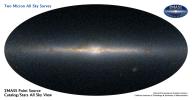
|
-
PIA04250:
-
Point Source All Sky
Full Resolution:
TIFF
(30.1 MB)
JPEG
(3.661 MB)
|

|
2003-03-27 |
|
Two Micron All Sky Survey (2MASS)
|
Two Micron All Sky Survey (2MASS)
|
4500x2400x3 |
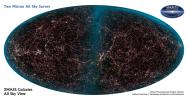
|
-
PIA04251:
-
Extended Source/Galaxy All Sky 2
Full Resolution:
TIFF
(20.06 MB)
JPEG
(1.845 MB)
|

|
2003-03-27 |
|
Two Micron All Sky Survey (2MASS)
|
Two Micron All Sky Survey (2MASS)
|
4500x2400x3 |
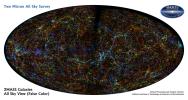
|
-
PIA04252:
-
Extended Source/Galaxy All Sky 1
Full Resolution:
TIFF
(19 MB)
JPEG
(2.299 MB)
|

|
2003-05-21 |
|
Hubble Space Telescope
|
WFPC2
|
869x444x3 |
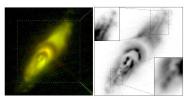
|
-
PIA04277:
-
Hubble's View of a Dying Star
Full Resolution:
TIFF
(635.3 kB)
JPEG
(42.81 kB)
|

|
2004-03-08 |
|
Spitzer Space Telescope
|
IRAC
Multiband Imaging Photometer (MIPS)
|
2262x1899x3 |
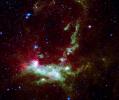
|
-
PIA05517:
-
Star Formation in Henize 206
Full Resolution:
TIFF
(8.739 MB)
JPEG
(428.1 kB)
|

|
2003-05-27 |
|
Hubble Space Telescope
|
WFPC2
|
612x792x3 |

|
-
PIA04533:
-
The Red Rectangle
Full Resolution:
TIFF
(870.7 kB)
JPEG
(38.33 kB)
|

|
2003-05-28 |
|
Galaxy Evolution Explorer (GALEX)
|
GALEX Telescope
|
534x528x3 |
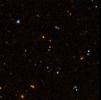
|
-
PIA04278:
-
GALEX 1st Light Near Ultraviolet -50
Full Resolution:
TIFF
(540.4 kB)
JPEG
(33.53 kB)
|

|
2003-05-28 |
|
Galaxy Evolution Explorer (GALEX)
|
GALEX Telescope
|
1450x1550x3 |

|
-
PIA04279:
-
GALEX 1st Light Near Ultraviolet
Full Resolution:
TIFF
(2.538 MB)
JPEG
(173.2 kB)
|

|
2003-05-28 |
|
Galaxy Evolution Explorer (GALEX)
|
GALEX Telescope
|
1450x1555x3 |

|
-
PIA04280:
-
GALEX 1st Light Far Ultraviolet
Full Resolution:
TIFF
(1.453 MB)
JPEG
(93.59 kB)
|

|
2003-05-28 |
|
Galaxy Evolution Explorer (GALEX)
|
GALEX Telescope
|
534x528x3 |
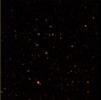
|
-
PIA04281:
-
GALEX 1st Light Near and Far Ultraviolet -100
Full Resolution:
TIFF
(390.4 kB)
JPEG
(22.84 kB)
|

|
2003-05-28 |
|
Galaxy Evolution Explorer (GALEX)
|
GALEX Telescope
|
2112x1533x3 |
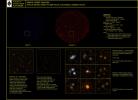
|
-
PIA04282:
-
GALEX 1st Light Compilation
Full Resolution:
TIFF
(2.837 MB)
JPEG
(340.9 kB)
|

|
2003-07-03 |
|
Hubble Space Telescope
|
WFPC2
|
2603x2783x3 |

|
-
PIA04609:
-
Celestial Fireworks
Full Resolution:
TIFF
(13.8 MB)
JPEG
(871.3 kB)
|

|
2003-07-25 |
|
Galaxy Evolution Explorer (GALEX)
|
GALEX Telescope
|
989x1010x3 |

|
-
PIA04623:
-
Galaxy UGC10445
Full Resolution:
TIFF
(1.436 MB)
JPEG
(48.59 kB)
|

|
2003-07-25 |
|
Galaxy Evolution Explorer (GALEX)
|
GALEX Telescope
|
1600x1496x3 |
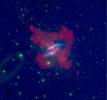
|
-
PIA04624:
-
Galaxy Centaurus A
Full Resolution:
TIFF
(7.193 MB)
JPEG
(235.1 kB)
|

|
2003-07-25 |
|
Galaxy Evolution Explorer (GALEX)
|
GALEX Telescope
|
795x735x3 |
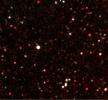
|
-
PIA04625:
-
Groth Deep Image
Full Resolution:
TIFF
(1.143 MB)
JPEG
(66.32 kB)
|

|
2003-07-25 |
|
Galaxy Evolution Explorer (GALEX)
|
GALEX Telescope
|
796x733x3 |
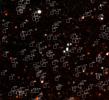
|
-
PIA04626:
-
Groth Deep Locations Image
Full Resolution:
TIFF
(1.188 MB)
JPEG
(93.39 kB)
|

|
2003-07-25 |
|
Galaxy Evolution Explorer (GALEX)
|
GALEX Telescope
|
770x644x3 |
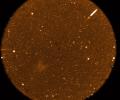
|
-
PIA04627:
-
Deep Imaging Survey
Full Resolution:
TIFF
(1.282 MB)
JPEG
(112.4 kB)
|

|
2003-07-25 |
|
Galaxy Evolution Explorer (GALEX)
|
GALEX Telescope
|
996x1003x3 |

|
-
PIA04628:
-
Galaxy Messier 51
Full Resolution:
TIFF
(1.012 MB)
JPEG
(36.55 kB)
|

|
2003-07-25 |
|
Galaxy Evolution Explorer (GALEX)
|
GALEX Telescope
|
1008x992x3 |
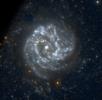
|
-
PIA04629:
-
Galaxy Messier 83
Full Resolution:
TIFF
(2.944 MB)
JPEG
(194.6 kB)
|

|
2003-07-25 |
|
Galaxy Evolution Explorer (GALEX)
|
GALEX Telescope
|
1771x1401x3 |
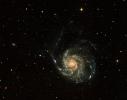
|
-
PIA04630:
-
Galaxy M101
Full Resolution:
TIFF
(4.213 MB)
JPEG
(242.3 kB)
|

|
2003-07-25 |
|
Galaxy Evolution Explorer (GALEX)
|
GALEX Telescope
|
1024x804x1 |
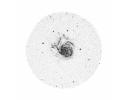
|
-
PIA04631:
-
Messier 101
Full Resolution:
TIFF
(341.8 kB)
JPEG
(104.1 kB)
|

|
2003-07-25 |
|
Galaxy Evolution Explorer (GALEX)
|
GALEX Telescope
|
991x1008x3 |

|
-
PIA04632:
-
Messier 101 Single Orbit Exposure
Full Resolution:
TIFF
(1.415 MB)
JPEG
(69.7 kB)
|

|
2003-07-25 |
|
Galaxy Evolution Explorer (GALEX)
|
GALEX Telescope
|
1000x1000x3 |
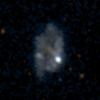
|
-
PIA04633:
-
Galaxy NGC5398
Full Resolution:
TIFF
(1.495 MB)
JPEG
(55.54 kB)
|

|
2003-07-25 |
|
Galaxy Evolution Explorer (GALEX)
|
GALEX Telescope
|
1034x965x3 |
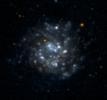
|
-
PIA04634:
-
Galaxy NGC5474
Full Resolution:
TIFF
(1.955 MB)
JPEG
(69.65 kB)
|

|
2003-07-25 |
|
Galaxy Evolution Explorer (GALEX)
|
GALEX Telescope
|
1017x982x3 |
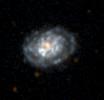
|
-
PIA04635:
-
Galaxy NGC5962
Full Resolution:
TIFF
(1.459 MB)
JPEG
(58.28 kB)
|

|
2003-09-03 |
|
Spitzer Space Telescope
|
IRAC
|
1600x2000x3 |

|
-
PIA04724:
-
SIRTF "Aliveness Test" Image
Full Resolution:
TIFF
(2.686 MB)
JPEG
(162.7 kB)
|

|
2003-12-10 |
|
Galaxy Evolution Explorer (GALEX)
|
GALEX Telescope
|
6200x6200x3 |
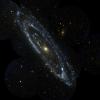
|
-
PIA04921:
-
Andromeda Galaxy
Full Resolution:
TIFF
(68.05 MB)
JPEG
(4.329 MB)
|

|
2003-12-10 |
|
Galaxy Evolution Explorer (GALEX)
|
GALEX Telescope
|
1501x1501x3 |
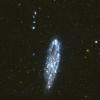
|
-
PIA04922:
-
Galaxy NGC 247
Full Resolution:
TIFF
(5.959 MB)
JPEG
(432.4 kB)
|

|
2003-12-10 |
|
Galaxy Evolution Explorer (GALEX)
|
GALEX Telescope
|
1755x790x3 |
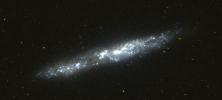
|
-
PIA04923:
-
Galaxy NGC 55
Full Resolution:
TIFF
(3.007 MB)
JPEG
(154.3 kB)
|

|
2003-12-10 |
|
Galaxy Evolution Explorer (GALEX)
|
GALEX Telescope
|
1500x1500x3 |
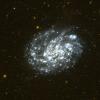
|
-
PIA04924:
-
Galaxy NGC 300
Full Resolution:
TIFF
(6.134 MB)
JPEG
(437.5 kB)
|

|
2003-12-10 |
|
Galaxy Evolution Explorer (GALEX)
|
GALEX Telescope
|
3840x3840x3 |
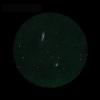
|
-
PIA04925:
-
Stephan's Quintet and NGC 7331
Full Resolution:
TIFF
(17.31 MB)
JPEG
(1.19 MB)
|

|
2003-12-11 |
|
Galaxy Evolution Explorer (GALEX)
|
GALEX Telescope
|
960x960x3 |
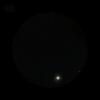
|
-
PIA04926:
-
Globular Cluster Messier 2 in Aquarius
Full Resolution:
TIFF
(756.8 kB)
JPEG
(33.15 kB)
|

|
2003-12-18 |
|
Spitzer Space Telescope
|
IRAC
|
1142x939x3 |
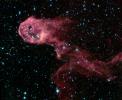
|
-
PIA04934:
-
Dark Globule in IC 1396 (IRAC)
Full Resolution:
TIFF
(2.755 MB)
JPEG
(172.5 kB)
|

|
2003-12-18 |
|
Spitzer Space Telescope
|
MIPS
IRAC
|
2332x1616x3 |
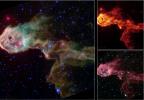
|
-
PIA04935:
-
Multi-Wavelength Views of Protostars in IC 1396
Full Resolution:
TIFF
(9.179 MB)
JPEG
(359.4 kB)
|

|
2003-12-18 |
|
Spitzer Space Telescope
|
IRAC
|
1364x1038x3 |
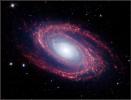
|
-
PIA04936:
-
Short-Wavelength Infrared Views of Messier 81
Full Resolution:
TIFF
(3.273 MB)
JPEG
(139.3 kB)
|

|
2003-12-18 |
|
Spitzer Space Telescope
|
MIPS
IRAC
|
2286x2334x3 |

|
-
PIA04937:
-
Multi-Wavelength Views of Messier 81
Full Resolution:
TIFF
(12.2 MB)
JPEG
(516.4 kB)
|

|
2003-12-18 |
|
Spitzer Space Telescope
|
MIPS
|
1108x2148x3 |

|
-
PIA04938:
-
Long-Wavelength Infrared Views of Messier 81
Full Resolution:
TIFF
(3.404 MB)
JPEG
(164.3 kB)
|

|
2003-12-18 |
|
Spitzer Space Telescope
|
IRAC
|
1020x643x3 |
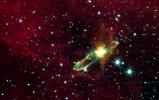
|
-
PIA04939:
-
Embedded Outflows from Herbig-Haro 46/47
Full Resolution:
TIFF
(1.772 MB)
JPEG
(79.87 kB)
|

|
2003-12-18 |
|
Spitzer Space Telescope
|
Infrared Spectrograph (IRS)
|
2872x2056x3 |
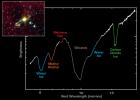
|
-
PIA04940:
-
Spectrum from Embedded Star in Herbig-Haro 46/47
Full Resolution:
TIFF
(2.417 MB)
JPEG
(271.3 kB)
|

|
2003-12-18 |
|
Spitzer Space Telescope
|
Infrared Spectrograph (IRS)
|
2912x2040x3 |
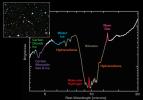
|
-
PIA04941:
-
Spectrum from Faint Galaxy IRAS F00183-7111
Full Resolution:
TIFF
(2.3 MB)
JPEG
(316.7 kB)
|

|
2003-12-18 |
|
Spitzer Space Telescope
|
MIPS
|
1424x944x3 |
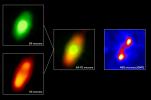
|
-
PIA04942:
-
Circumstellar Disk Around Fomalhaut
Full Resolution:
TIFF
(789.1 kB)
JPEG
(58.51 kB)
|

|
2003-12-18 |
|
Spitzer Space Telescope
|
MIPS
|
658x430x3 |
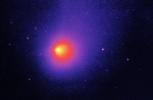
|
-
PIA04943:
-
Comet Schwassmann-Wachmann I
Full Resolution:
TIFF
(611.8 kB)
JPEG
(26.98 kB)
|

|
2004-02-03 |
|
Hubble Space Telescope
|
WFPC2
|
1065x771x3 |
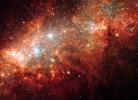
|
-
PIA05202:
-
Supernova Blast Bonanza in Nearby Galaxy
Full Resolution:
TIFF
(2.467 MB)
JPEG
(177.7 kB)
|

|
2004-03-11 |
|
Mars Exploration Rover (MER)
|
Panoramic Camera
|
1024x1024x1 |
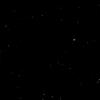
|
-
PIA05546:
-
Stars in Orion as Seen from Mars
Full Resolution:
TIFF
(71.62 kB)
JPEG
(17.04 kB)
|

|
2004-03-12 |
|
Mars Exploration Rover (MER)
|
Panoramic Camera
|
1024x1024x1 |
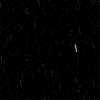
|
-
PIA05551:
-
Stars and Cosmic Rays Observed from Mars
Full Resolution:
TIFF
(145.9 kB)
JPEG
(53.38 kB)
|

|
2004-03-12 |
|
Mars Exploration Rover (MER)
|
Navigation Camera
Panoramic Camera
|
1174x1041x1 |
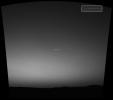
|
-
PIA05557:
-
It's a Bird, It's a Plane, It's a... Spacecraft?
Full Resolution:
TIFF
(600.2 kB)
JPEG
(54.38 kB)
|

|
2004-04-13 |
|
Spitzer Space Telescope
|
IRAC
|
3652x1936x3 |
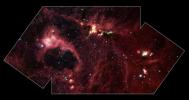
|
-
PIA05732:
-
Nursery of Giants
Full Resolution:
TIFF
(13.19 MB)
JPEG
(548.3 kB)
|

|
2004-04-13 |
|
Spitzer Space Telescope
|
MIPS
|
2499x779x3 |

|
-
PIA05733:
-
Stormy Clouds of Star Birth
Full Resolution:
TIFF
(3.511 MB)
JPEG
(102.2 kB)
|

|
2004-04-13 |
|
Spitzer Space Telescope
|
IRAC
|
3652x1936x3 |
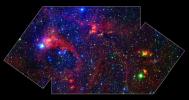
|
-
PIA05734:
-
Spitzer Makes "Invisible" Visible
Full Resolution:
TIFF
(12.89 MB)
JPEG
(935.6 kB)
|

|
2004-04-13 |
|
Spitzer Space Telescope
|
IRAC
Multiband Imaging Photometer (MIPS)
|
3600x2556x3 |
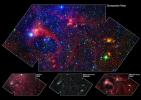
|
-
PIA05735:
-
Star Formation in the DR21 Region (A)
Full Resolution:
TIFF
(17.13 MB)
JPEG
(1.391 MB)
|

|
2004-04-13 |
|
Spitzer Space Telescope
|
IRAC
Multiband Imaging Photometer (MIPS)
|
3588x4224x3 |

|
-
PIA05736:
-
Star Formation in the DR21 Region (B)
Full Resolution:
TIFF
(19.11 MB)
JPEG
(840.7 kB)
|

|
2004-05-11 |
|
Spitzer Space Telescope
|
IRAC
|
1530x776x3 |

|
-
PIA05878:
-
A Natal Microcosm
Full Resolution:
TIFF
(3.336 MB)
JPEG
(98.57 kB)
|

|
2004-05-11 |
|
Spitzer Space Telescope
|
IRAC
|
708x570x3 |
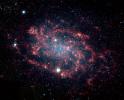
|
-
PIA05879:
-
Dissection of a Galaxy
Full Resolution:
TIFF
(1.009 MB)
JPEG
(75.25 kB)
|

|
2004-05-24 |
|
Galaxy Evolution Explorer (GALEX)
|
GALEX Telescope
|
3840x3840x3 |

|
-
PIA05979:
-
Happy Anniversary to a Galactic Explorer
Full Resolution:
TIFF
(17.37 MB)
JPEG
(1.266 MB)
|

|
2004-05-27 |
|
Spitzer Space Telescope
|
|
1600x1200x3 |
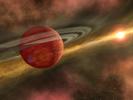
|
-
PIA05988:
-
Out of the Dust, A Planet is Born (Artist Concept)
Full Resolution:
TIFF
(4.995 MB)
JPEG
(111.9 kB)
|

|
2005-07-27 |
|
Spitzer Space Telescope
|
Infrared Spectrograph (IRS)
|
2361x1506x3 |
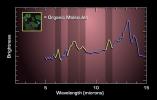
|
-
PIA03537:
-
Charting Ingredients for Life
Full Resolution:
TIFF
(10.68 MB)
JPEG
(174.6 kB)
|

|
2005-07-27 |
|
Spitzer Space Telescope
|
|
2526x1827x3 |
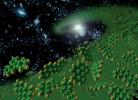
|
-
PIA03538:
-
Ingredients for Life (Artist's Concept)
Full Resolution:
TIFF
(13.86 MB)
JPEG
(575.9 kB)
|

|
2004-09-07 |
|
Spitzer Space Telescope
|
IRAC
|
1125x1125x3 |
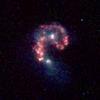
|
-
PIA06853:
-
Life at the Intersection of Colliding Galaxies
Full Resolution:
TIFF
(2.824 MB)
JPEG
(96.35 kB)
|

|
2004-09-07 |
|
Spitzer Space Telescope
|
IRAC
|
1125x1125x3 |
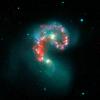
|
-
PIA06854:
-
Fire within the Antennae Galaxies
Full Resolution:
TIFF
(2.308 MB)
JPEG
(76.5 kB)
|

|
2004-10-06 |
|
Hubble Space Telescope
Spitzer Space Telescope
|
Chandra X-ray Telescope
Hubble Space Telescope
Spitzer Space Telescope
|
750x750x3 |
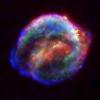
|
-
PIA06907:
-
Three Great Eyes on Kepler's Supernova
Remnant
Full Resolution:
TIFF
(1.453 MB)
JPEG
(33.78 kB)
|

|
2004-10-06 |
|
Chandra X-ray Observatory
|
Chandra X-ray Telescope
|
2400x2400x3 |
![The images indicate that the bubble of gas that makes up the supernova remnant appears different in various types of light. Chandra reveals the hottest gas [colored blue and colored green], which radiates in X-rays.](/thumb/PIA06908.jpg)
|
-
PIA06908:
-
Kepler's Supernova Remnant: A View from Chandra X-Ray Observatory
Full Resolution:
TIFF
(8.168 MB)
JPEG
(288.1 kB)
|

|
2004-10-06 |
|
Hubble Space Telescope
|
Advanced Camera for Surveys
|
3622x3445x3 |
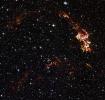
|
-
PIA06909:
-
Kepler's Supernova Remnant: A View from Hubble Space Telescope
Full Resolution:
TIFF
(30.15 MB)
JPEG
(2.364 MB)
|

|
2004-10-06 |
|
Spitzer Space Telescope
|
IRAC
|
1090x1090x3 |
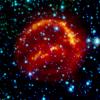
|
-
PIA06910:
-
Kepler's Supernova Remnant: A View from Spitzer Space Telescope
Full Resolution:
TIFF
(2.167 MB)
JPEG
(110.8 kB)
|

|
2004-10-12 |
|
Spitzer Space Telescope
|
IRAC
|
602x602x3 |
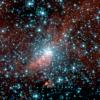
|
-
PIA06928:
-
Spitzer Digs Up Galactic Fossil
Full Resolution:
TIFF
(1.089 MB)
JPEG
(63.25 kB)
|

|
2004-10-18 |
|
Spitzer Space Telescope
|
IRAC
|
3000x2400x3 |
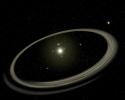
|
-
PIA06939:
-
The Rocky World of Young Planetary Systems (Artist Concept)
Full Resolution:
TIFF
(4.159 MB)
JPEG
(301.4 kB)
|

|
2004-12-09 |
|
Spitzer Space Telescope
|
|
3000x1688x3 |
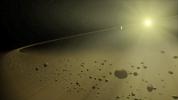
|
-
PIA07096:
-
A Distant Solar System (Artist's Concept)
Full Resolution:
TIFF
(7.518 MB)
JPEG
(308.1 kB)
|

|
2004-12-09 |
|
Spitzer Space Telescope
|
|
3000x1688x3 |
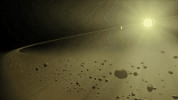
|
-
PIA07097:
-
A Distant Solar System (Artist's Concept Animation)

Full Resolution:
|

|
2004-12-09 |
|
Spitzer Space Telescope
|
|
1386x956x3 |
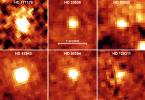
|
-
PIA07098:
-
Is There Anybody Home?
Full Resolution:
TIFF
(1.3 MB)
JPEG
(126 kB)
|

|
2004-12-09 |
|
Spitzer Space Telescope
|
|
1364x1024x3 |
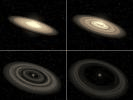
|
-
PIA07099:
-
The Evolution of a Planet-Forming Disk (Artist's Concept Animation)

Full Resolution:
TIFF
(4.195 MB)
JPEG
(75.87 kB)
|

|
2004-12-21 |
|
Galaxy Evolution Explorer (GALEX)
|
GALEX Telescope
|
1793x1194x3 |
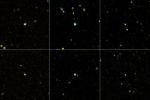
|
-
PIA07143:
-
Nearby Newborns
Full Resolution:
TIFF
(1.313 MB)
JPEG
(194 kB)
|

|
2004-12-22 |
|
Galaxy Evolution Explorer (GALEX)
|
GALEX Telescope
|
587x473x3 |
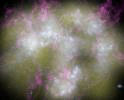
|
-
PIA07144:
-
Fires of Galactic Youth (Artist Animation)

Full Resolution:
TIFF
(834.1 kB)
JPEG
(35.86 kB)
|

|
2004-12-21 |
|
Galaxy Evolution Explorer (GALEX)
|
GALEX Telescope
|
2496x1386x3 |
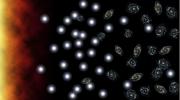
|
-
PIA07142:
-
Baby Galaxies in the Adult Universe
Full Resolution:
TIFF
(5.796 MB)
JPEG
(183.5 kB)
|

|
2005-01-11 |
|
Spitzer Space Telescope
|
MIPS
|
2364x1172x3 |
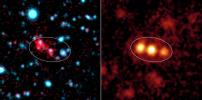
|
-
PIA07220:
-
Mysterious Blob Galaxies Revealed
Full Resolution:
TIFF
(4.293 MB)
JPEG
(173.1 kB)
|

|
2005-01-11 |
|
Spitzer Space Telescope
|
|
3000x2400x3 |
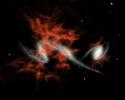
|
-
PIA07221:
-
At the Heart of Blobs (Artist Concept)
Full Resolution:
TIFF
(8.552 MB)
JPEG
(322.3 kB)
|

|
2005-01-12 |
|
Spitzer Space Telescope
|
IRAC
Multiband Imaging Photometer (MIPS)
|
2816x1404x3 |
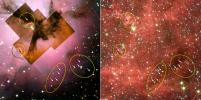
|
-
PIA07226:
-
Stellar 'Incubators' Seen Cooking up Stars
Full Resolution:
TIFF
(11.86 MB)
JPEG
(481.7 kB)
|

|
2005-03-01 |
|
Spitzer Space Telescope
|
Infrared Spectrograph (IRS)
|
2647x1958x3 |
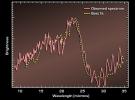
|
-
PIA07395:
-
Fingerprints in the Light
Full Resolution:
TIFF
(3.413 MB)
JPEG
(283.3 kB)
|

|
2005-03-01 |
|
Spitzer Space Telescope
|
|
3000x2400x3 |
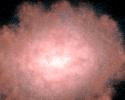
|
-
PIA07396:
-
Invisible Galaxies Come to Life! (Artist Concept)

Full Resolution:
TIFF
(18.75 MB)
JPEG
(578.1 kB)
|

|
2005-03-22 |
|
Spitzer Space Telescope
|
|
2783x1739x3 |
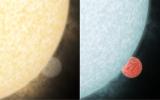
|
-
PIA07490:
-
Blinded by the Light (Artist Concept)
Full Resolution:
TIFF
(11.48 MB)
JPEG
(252.5 kB)
|

|
2005-03-22 |
|
Spitzer Space Telescope
|
IRAC
Multiband Imaging Photometer (MIPS)
|
2220x2374x3 |

|
-
PIA07491:
-
The Language of Planetary Light
Full Resolution:
TIFF
(6.72 MB)
JPEG
(358 kB)
|

|
2005-05-05 |
|
Hubble Space Telescope
|
Visible Light
|
3000x1681x3 |
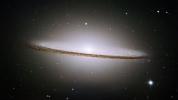
|
-
PIA15226:
-
Hubble Spies Spectacular Sombrero
Full Resolution:
TIFF
(15.13 MB)
JPEG
(427.2 kB)
|

|
2005-05-31 |
|
Galaxy Evolution Explorer (GALEX)
|
GALEX Telescope
|
2154x2154x3 |
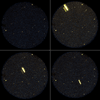
|
-
PIA07250:
-
It's Not a Bird or a Plane

Full Resolution:
TIFF
(13.94 MB)
JPEG
(1.486 MB)
|

|
2005-05-31 |
|
Galaxy Evolution Explorer (GALEX)
|
GALEX Telescope
|
2154x2154x3 |
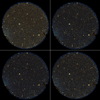
|
-
PIA07251:
-
Surprise Ultraviolet Party in the Sky

Full Resolution:
TIFF
(13.94 MB)
JPEG
(1.617 MB)
|

|
2005-10-20 |
|
Spitzer Space Telescope
|
|
3000x2400x3 |
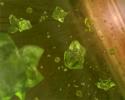
|
-
PIA03048:
-
Sowing the Seeds of Planets? (Artist's Concept)
Full Resolution:
TIFF
(21.6 MB)
JPEG
(301.7 kB)
|

|
2005-10-28 |
|
Spitzer Space Telescope
|
IRAC
|
1600x1600x3 |
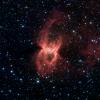
|
-
PIA03544:
-
Black Widow Nebula Hiding in the Dust
Full Resolution:
TIFF
(7.693 MB)
JPEG
(323.3 kB)
|

|
2005-11-09 |
|
Spitzer Space Telescope
|
IRAC
|
3426x2548x3 |
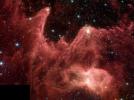
|
-
PIA03096:
-
Towering Infernos
Full Resolution:
TIFF
(26.19 MB)
JPEG
(900.3 kB)
|

|
2005-12-01 |
|
Spitzer Space Telescope
|
IRAC
|
848x711x3 |
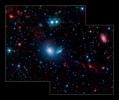
|
-
PIA03605:
-
Dwarf Galaxies Swimming in Tidal Tails
Full Resolution:
TIFF
(1.811 MB)
JPEG
(60.3 kB)
|

|
2005-12-22 |
|
Spitzer Space Telescope
|
IRAC
Multiband Imaging Photometer (MIPS)
|
2310x3897x3 |

|
-
PIA03244:
-
Stellar Snowflake Cluster
Full Resolution:
TIFF
(27.04 MB)
JPEG
(801.6 kB)
|

|
2006-01-09 |
|
Galaxy Evolution Explorer (GALEX)
|
GALEX Telescope
|
2264x2260x3 |
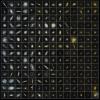
|
-
PIA03295:
-
GALEX Distributes Local Galactic Treasures at AAS
Full Resolution:
TIFF
(15.37 MB)
JPEG
(788 kB)
|

|
2006-01-17 |
|
Stardust
|
DC-8 Airborne Laboratory
|
2360x1808x3 |

|
-
PIA03668:
-
Stardust Capsule Return
Full Resolution:
TIFF
(12.82 MB)
JPEG
(371 kB)
|

|
2010-02-17 |
|
Wide-field Infrared Survey Explorer (WISE)
|
WISE Telescope
|
3999x3999x3 |

|
-
PIA12835:
-
Fornax Galaxy Cluster
Full Resolution:
TIFF
(47.98 MB)
JPEG
(2.191 MB)
|

|
2010-02-17 |
|
Wide-field Infrared Survey Explorer (WISE)
|
WISE Telescope
|
6666x6666x3 |
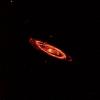
|
-
PIA12834:
-
The Dirt on Andromeda
Full Resolution:
TIFF
(133.3 MB)
JPEG
(2.051 MB)
|

|
2006-02-15 |
|
Spitzer Space Telescope
|
IRAC
|
706x869x3 |

|
-
PIA08007:
-
Galaxy NGC 4579
Full Resolution:
TIFF
(1.843 MB)
JPEG
(35.48 kB)
|

|
2006-02-15 |
|
Spitzer Space Telescope
|
Infrared Spectrograph (IRS)
|
3000x2400x3 |
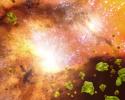
|
-
PIA02180:
-
Galactic Hearts of Glass (Artist Concept)
Full Resolution:
TIFF
(21.6 MB)
JPEG
(875.8 kB)
|

|
2010-02-17 |
|
Wide-field Infrared Survey Explorer (WISE)
|
WISE Telescope
|
6666x6666x3 |
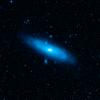
|
-
PIA12833:
-
Warped Andromeda
Full Resolution:
TIFF
(133.3 MB)
JPEG
(5.753 MB)
|

|
2006-03-03 |
|
Spitzer Space Telescope
|
IRAC
Near Infrared Spectrometer
|
966x966x3 |
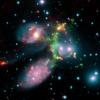
|
-
PIA02587:
-
A Shocking Surprise in Stephan's Quintet
Full Resolution:
TIFF
(2.804 MB)
JPEG
(87.19 kB)
|

|
2006-03-16 |
|
Spitzer Space Telescope
|
IRAC
|
480x640x3 |

|
-
PIA02917:
-
Smokin' Hot Galaxy (animation)

Full Resolution:
TIFF
(6.619 MB)
JPEG
(163.8 kB)
|

|
2006-03-21 |
|
Spitzer Space Telescope
|
IRAC
|
2243x2240x3 |
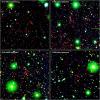
|
-
PIA02038:
-
Great Galactic Buddies
Full Resolution:
TIFF
(15.09 MB)
JPEG
(698.3 kB)
|

|
2006-04-05 |
|
Spitzer Space Telescope
|
|
3200x2400x3 |
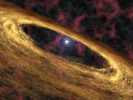
|
-
PIA08040:
-
Stellar Rubble May be Planetary Building Blocks (Artist Concept)

Full Resolution:
TIFF
(23.04 MB)
JPEG
(721.1 kB)
|

|
2006-04-05 |
|
Spitzer Space Telescope
W. M. Keck Observatory
|
IRAC
Keck I Telescope
|
2571x2130x3 |
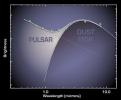
|
-
PIA08041:
-
Circle of Ashes
Full Resolution:
TIFF
(16.45 MB)
JPEG
(212.9 kB)
|

|
2006-04-05 |
|
Spitzer Space Telescope
|
|
3000x2400x3 |
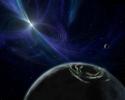
|
-
PIA08042:
-
Extreme Planets (Artist Concept)
Full Resolution:
TIFF
(21.6 MB)
JPEG
(351.9 kB)
|

 Planetary Data System
Planetary Data System









































































![The images indicate that the bubble of gas that makes up the supernova remnant appears different in various types of light. Chandra reveals the hottest gas [colored blue and colored green], which radiates in X-rays.](/thumb/PIA06908.jpg)









































